
The performance ranking of cabin SoC chips is weighted by CPU computing power, GPU computing power, manufacturing process, memory bandwidth, and AI computing power. CPU computing power determines the smoothness of the cabin system; GPU computing power determines the number of screens, resolution, and 3D graphics performance; the more advanced the manufacturing process, the more power consumption can be reduced; memory bandwidth also affects smoothness; AI computing power is mainly used for automatic parking or local voice recognition, and is therefore less important, ranking last.Top 28 Cabin SoC Chip Performance Rankings
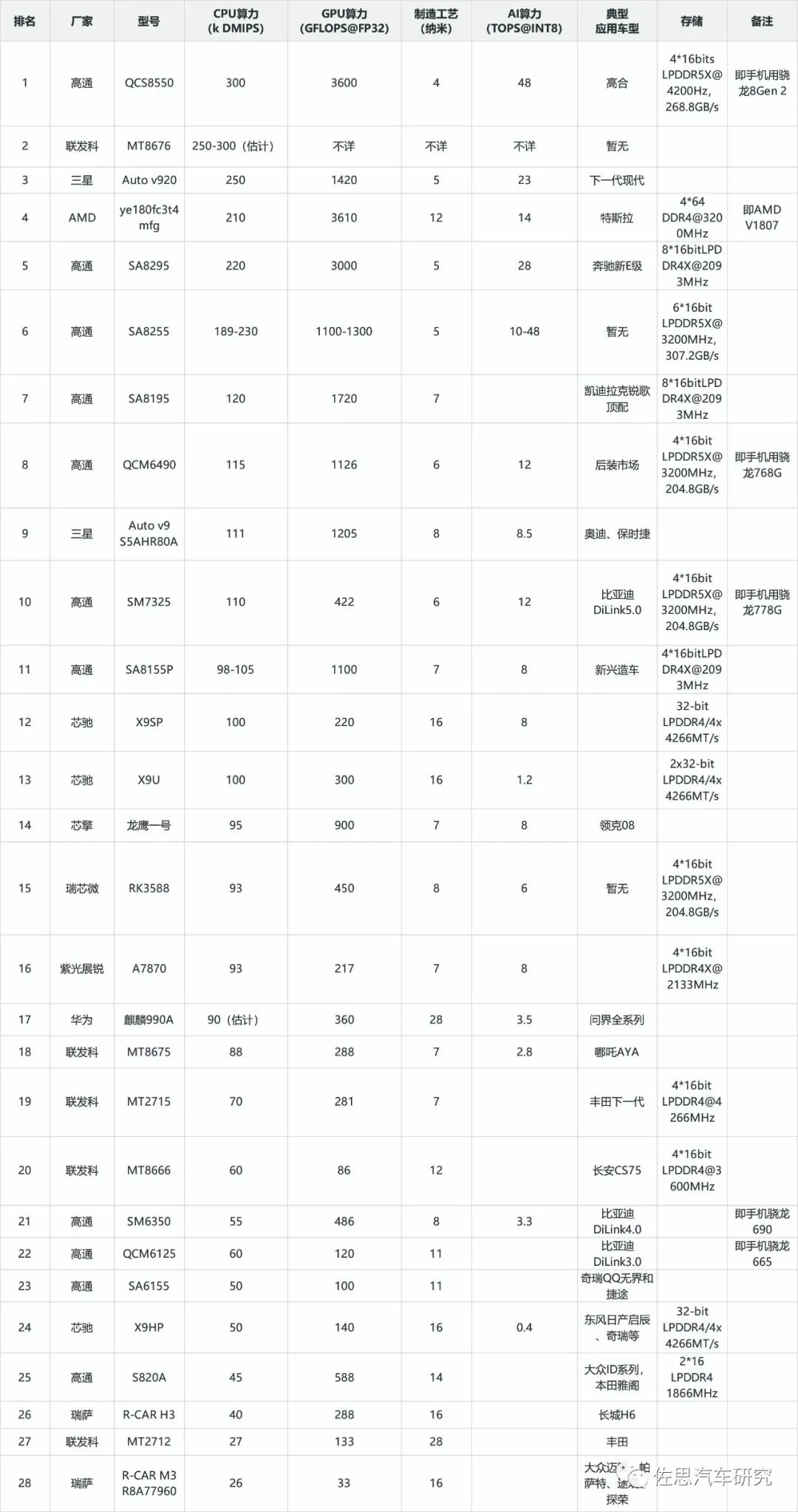
Source: Compiled from public data
The first place in cabin SoC is Qualcomm’s QCS8550, which is the Snapdragon 8 Gen 2, the previous generation flagship chip in the mobile field. The second place should be MediaTek’s MT8676, which is also a 4nm chip. MediaTek has not disclosed any information about the MT8676, so its performance can only be roughly estimated, but the 4nm manufacturing process ensures that the MT8676 can compete with Qualcomm’s SA8295P. The MT8676 should at least have a configuration similar to the Dimensity 9000, which includes 4 Cortex-X2 large cores and 4 Cortex-A510 small cores, with a GPU likely being a 10-core MALI-G710, and the NPU possibly being an APU590.

The third place is Samsung’s Auto V920, which adopts a relatively rare 10-core design, all of which are ARM Cortex-A78AE, including 2 high-frequency, 4 mid-frequency, and 4 low-frequency cores. The GPU is the Xclipes 920, developed in collaboration with AMD, based on the RDNA2 architecture, but its performance is not particularly strong. The NPU has a computing power of 23 TOPS. Modern electric vehicles and the high-end brand Genesis are confirmed to use it in their next-generation models, and Audi and Porsche may also use it.
The fourth place is the ye180fc3t4mfg used in Tesla Model 3 and Model Y, which is AMD’s Ryzen v1000 series. The Model S Plaid version will add a dedicated graphics chip. Based on the model, it is likely a modified version of the V1807, with a maximum power of 45 watts, requiring water cooling. However, it is quite an old product, first launched in 2016 and officially released in February 2017, manufactured using GlobalFoundries’ 12nm process, which is quite outdated by today’s standards, but still has strong performance. The ye180fc3t4mfg does not have a dedicated NPU, but its GPU performance is robust, providing at least 14 TOPS of computing power for AI calculations. GAC also has high-end models using the V1000 series chips, likely the low-power versions V1404 or V1605, with a maximum power not exceeding 25 watts.
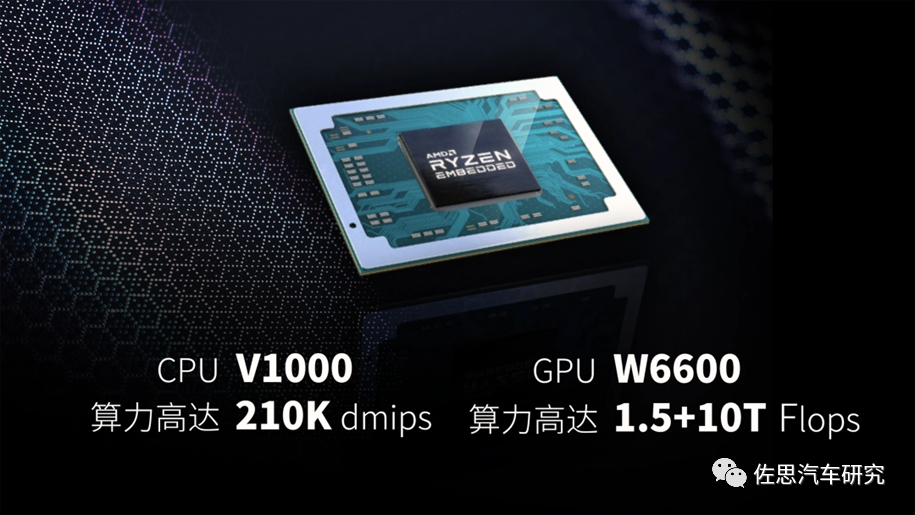
The fifth place is the SA8295P, launched at the end of 2020, which is very similar to the 8cx gen3 in the laptop field, featuring 4 Cortex-X1 large cores and 4 Cortex-A78 small cores. The GPU is the Adreno 695, the flagship product of Qualcomm’s 6xx series GPUs, with a computing power of up to 3000 GFLOPS. The NPU is relatively old, being the Hexagon V68. The storage system is 8-channel 16-bit LPDDR4x, with a maximum frequency of only 2092.8 MHz.SA8295P Framework Diagram
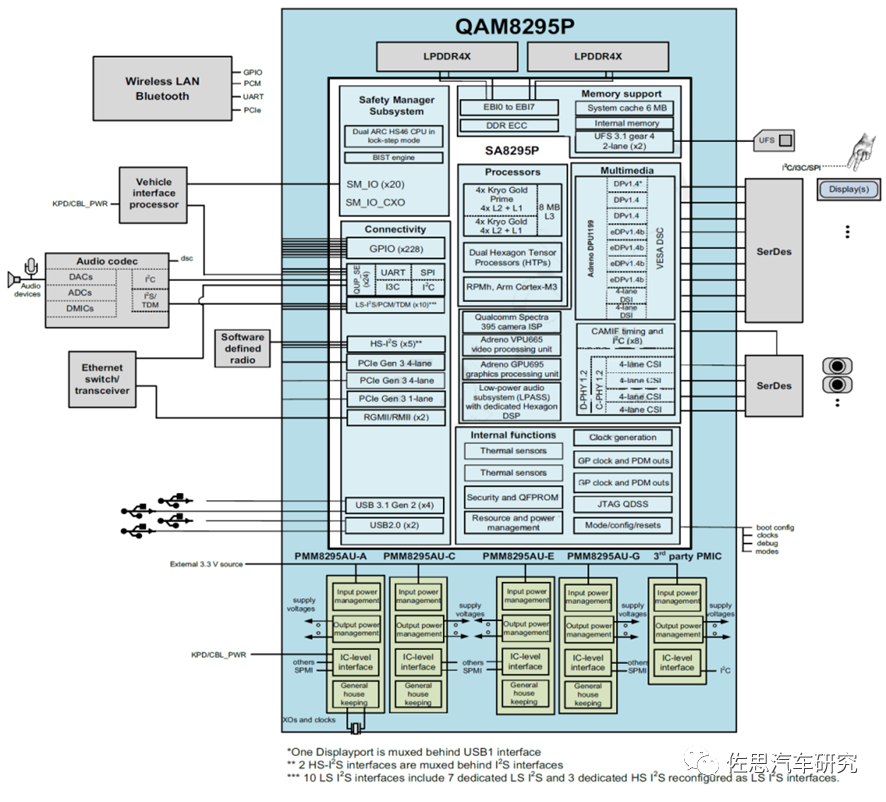
Image Source: Internet
The sixth place is the SA8255P. Although it is slightly lower in model than the SA8295P, it is stronger in some aspects and is a relatively new product. The CPU configuration is similar to that of the SA8295P, slightly outperforming it at high frequencies; the GPU is more cost-effective, using the Adreno 663, which is far below the Adreno 695, but the NPU is strong, being the Hexagon V73, with a maximum computing power of 48 TOPS, and if INT4, it can reach 96 TOPS, comparable to the first-ranked QCS8550. The storage is 6-channel LPDDR5, with a maximum of 3200 MHz.
The seventh place is the SA8195P, which is Qualcomm’s third-generation cabin chip flagship, but its position is awkward, being somewhat high yet not quite low. The CPU has a significant gap compared to Qualcomm’s fourth-generation cabin chip, but the GPU is strong, being the Adreno 680.
Qualcomm SA8195P
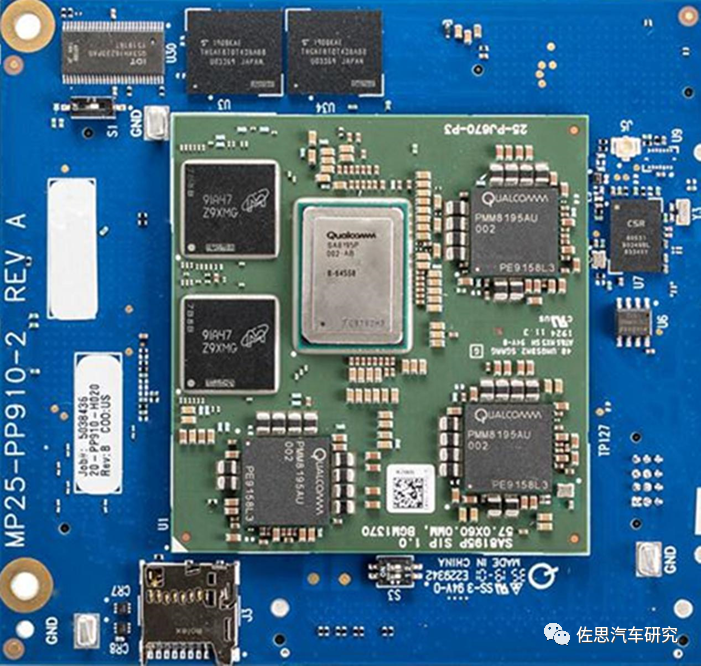
Image Source: Internet
The eighth place QCM6490 and the tenth place SM7325 are very close, essentially being Qualcomm’s Snapdragon 678G and 778G for mobile use, where the 678G is common in the aftermarket, and the 778G, i.e., SM7325, is used in BYD’s new generation cabin DiLink 5.0. BYD’s new products have all introduced SM7235, while the models that have not been upgraded still use DiLink 4.0. The SM7235 has significantly reduced GPU performance, far below QCM6490 and also lower than SA8155P, but the CPU has not been reduced, using 4 Cortex-A78 large cores at 2.4 GHz and 4 Cortex-A55 small cores at 1.8 GHz.
The ninth place is Samsung’s Auto V9, used in high-end Audi and Porsche models. The Auto V9 was launched in 2019, using an 8nm process, with an 8-core A76 architecture CPU, a main frequency of 2.1 GHz, and a computing power of up to 111 KDMIPS. The GPU uses an 18-core Mali G76, with a computing power of 1205 GFLOPS. It has 4 HiFi 4 DSPs, supporting 4 audio channels. In terms of video, it supports up to 4K120, H.264/265 decoding, and can support up to 6 screens simultaneously. It has 3 4Lane CSI interfaces that can support up to 6 cameras, and virtual multiplexing can support up to 12 cameras. Memory-wise, it can support four-channel LPDDR5, and the operating system supports Android. It meets ASIL-B automotive safety standards.
The tenth place is the well-known SA8155P, which is essentially a modified version of the Snapdragon 888 for mobile, featuring 1 Cortex-A76 large core at 2.42 GHz, 3 Cortex-A76 mid-cores at 2.13 GHz, and 4 Cortex-A55 small cores; the GPU configuration is high, being the Adreno 640, with a computing power of 1126 GFLOPS; in terms of AI, some sources say it has 8 TOPS, while others say 3.4 TOPS, with 8 TOPS likely referring to total AI computing power, including the GPU, and 3.4 TOPS referring specifically to the NPU, which is the Hexagon V66’s computing power.The SA8155P is roughly the top configuration for luxury cars abroad, while in China it can only be considered a high configuration. Most mainstream models abroad still use very old NXP i.MX8 or even i.MX6, while mid-range models mostly use Renesas M3, and high-end Japanese models use Renesas R-CAR H3, such as Lexus. High-end German models mainly use Qualcomm’s S820A.Disclaimer: The views and data in this article are for reference only and may differ from actual situations. This article does not constitute investment advice, and all views and data in the text only represent the author’s position, without any guidance, investment, or decision-making opinions.
Related Reports:“2023 Automotive Cabin SoC Research Report”
More Zosi Reports
Contact for report orders and cooperation inquiries:
Mr. Zhao: 18702148304 (same WeChat)
Mr. Fu: 15810027571 (same WeChat)
Zosi 2024 Research Report Writing Plan
Panorama of the Intelligent Connected Vehicle Industry Chain (November 2023 Edition)
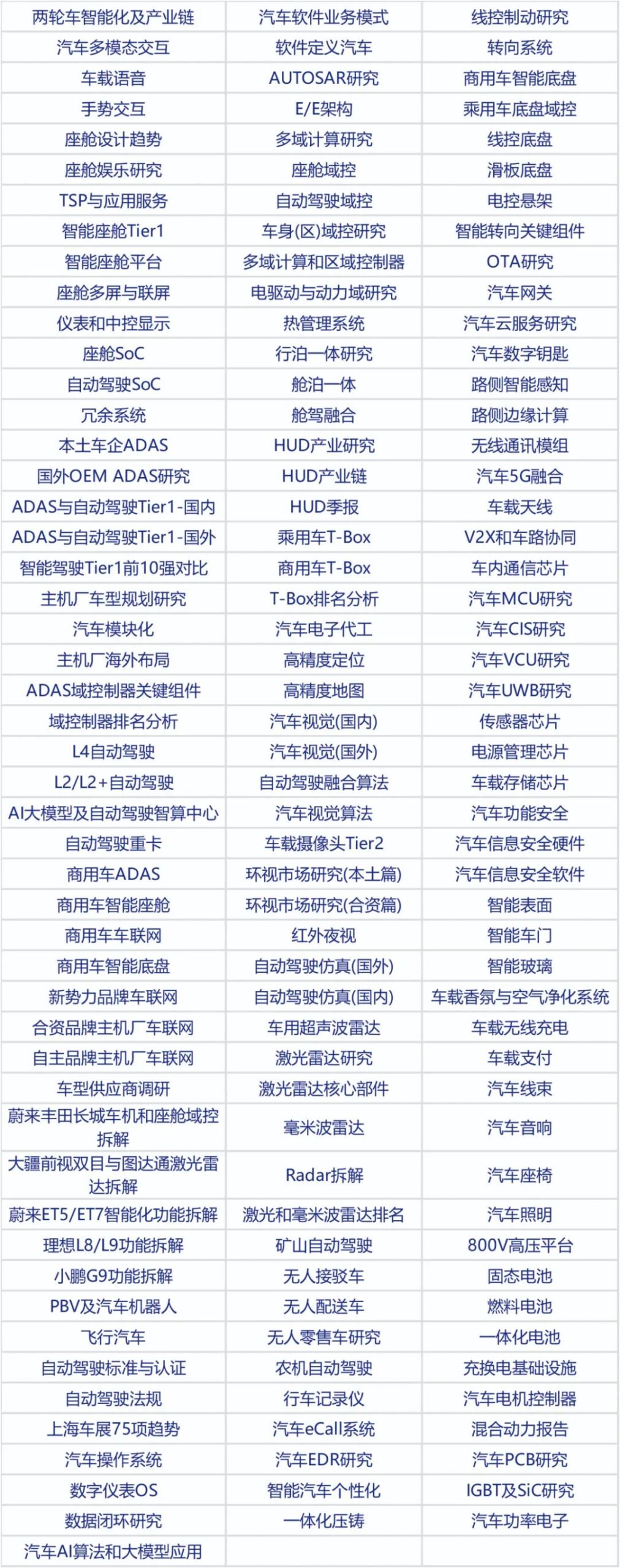
“Zosi Research Monthly Report“
ADAS/Intelligent Vehicle Monthly Report | Automotive Cabin Electronics Monthly Report | Automotive Vision and Radar Monthly Report | Battery, Motor, and Control Monthly Report | In-Vehicle Information System Monthly Report